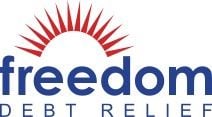Chapter 7 Bankruptcy: A Guide to Liquidation and Debt Relief
Chapter 7 can erase much of your debt, with notable exceptions such as student loans.

Many, or all, of the products featured on this page are from our advertising partners who compensate us when you take certain actions on our website or click to take an action on their website. However, this does not influence our evaluations. Our opinions are our own. Here is a list of our partners and here's how we make money.
Chapter 7 bankruptcy is the fastest and most common form of bankruptcy. Known as liquidation bankruptcy, Chapter 7 can wipe out many forms of overwhelming debt under the protection of a federal court. Most people don’t lose belongings, but you may have to give up things like a luxury car or expensive jewelry.
Chapter 7 bankruptcy erases most unsecured debts like medical bills, credit card debt and personal loans. But debts like back taxes, court judgments, alimony, child support and student loans generally aren’t eligible.
Chapter 7 bankruptcy will leave a serious mark on your credit reports for 10 years. During this time you’ll likely find it harder to get credit. Even so, it’s possible to start rebuilding your credit within a year or two if you work at it.
How to qualify for Chapter 7 bankruptcy
To qualify for Chapter 7 bankruptcy you:
- Must pass the means test, which looks at your income, assets and expenses.
- Can't have completed a Chapter 7 bankruptcy in the past eight years or a Chapter 13 bankruptcy within the past six years.
- Can't have filed a bankruptcy petition (Chapter 7 or 13) in the previous 180 days that was dismissed because you failed to appear in court or comply with court orders, or you voluntarily dismissed your own filing because creditors sought court relief to recover property they had a lien on.
Looking for an alternative product to pay down your debt?
Learn more about our debt relief partners belowHow to file Chapter 7 bankruptcy
You can probably complete the Chapter 7 process within six months. You'll have to follow several steps.
- Credit counseling: You must complete pre-file bankruptcy counseling from a qualified nonprofit credit counseling agency within 180 days before filing.
- Find an attorney: Find a qualified bankruptcy attorney to help. It’s hard to find money for a lawyer when you need debt relief, but this is not a DIY situation. Missing or improperly completed paperwork can lead to your case being thrown out or not having some debts dismissed.
- File paperwork: Your attorney will help with filing your petition and other paperwork. But it’s on you to gather all relevant documentation of your assets, income and debts. An automatic stay goes into effect at this point, meaning that most creditors cannot sue you, garnish your wages or contact you for payment.
- Trustee takes over: Once your petition is filed, a court-appointed bankruptcy trustee will begin managing the process.
- Meeting of creditors: The trustee will arrange a meeting between you, your lawyer and your creditors. You’ll have to answer questions from the trustee and creditors about your bankruptcy forms and finances.
- Your eligibility is determined: After reviewing your paperwork, the trustee will confirm whether you’re eligible for Chapter 7.
- Nonexempt property handled: The trustee determines whether assets that aren’t exempt are worth selling so proceeds can go to creditors. Nonexempt property can be jewelry, or the equity in your house or car if it’s higher than your state’s exemption limit. The majority of individual Chapter 7 cases, however, are “no asset” cases where there are no nonexempt items to liquidate.
- Secured debts: To resolve your secured debts, the property held as collateral may be ordered returned to the creditor. Or you may be able to redeem the collateral (you pay the creditor what it’s worth now) or reaffirm the debt (arrange to exclude the debt from bankruptcy and continue to pay it back).
- Education course: Before your case is discharged, you’ll have to take a financial education course from a qualified nonprofit credit counseling agency.
- Discharge: Four to six months after filing your petition, your case will be discharged, meaning that eligible debts are forgiven. Shortly thereafter your case will be closed.
Chapter 7 vs. Chapter 13 bankruptcy
Make sure you understand the difference between Chapter 7 bankruptcy and Chapter 13 bankruptcy. Chapter 7 makes sense when:
- You don’t have many assets.
- Your problem debts total more than 50% of your annual income.
- Your problem debts can be discharged, or forgiven, by Chapter 7. These include debts like medical bills, credit card debt and personal or payday loans.
- It would take five years or more to pay off your debt, even if you took extreme measures.
Use our debt calculator to total your debt
Some debts typically can’t be erased in bankruptcy, including recent taxes, child support and student loans. That said, bankruptcy still may be an option for you if erasing other balances would free up enough money to pay the debts that can’t be erased.
If you have more assets or secured debts and can repay some or all of what you owe, Chapter 13 bankruptcy might be more appropriate. Under Chapter 13, you complete a repayment plan.
Other debt relief options are available, too, such as a debt management plan through a credit counseling agency. Take advantage of the free initial advice that credit counselors and many bankruptcy attorneys offer before deciding on a path.
Rebuilding after bankruptcy
Your financial life — particularly your credit — will need some attention after bankruptcy, but having many debts resolved gives you a good starting point.
Take two steps to rebuild after bankruptcy:
- Make a financial plan: Build a budget, create financial goals, and consider enlisting the free help of a nonprofit credit counselor to help you along the way.
- Restore your credit: Make all payments on time, keep your credit balances low and dispute mistakes on your credit reports.
Frequently Asked Questions
Will filing for bankruptcy ruin my credit?
By the time you're ready to file for bankruptcy, your credit probably already has a few dings from late payments or accounts in collection. After a bankruptcy discharge, if you’re disciplined about rebuilding your credit, you may see your scores start to rebound within two years.
Can I file Chapter 7 bankruptcy without a lawyer?
You can file on your own behalf, but it’s strongly recommended that you hire an attorney when filing for bankruptcy. There are a lot of moving parts and one small clerical error can lead to your case being dismissed.
How long does Chapter 7 bankruptcy typically take?
There are multiple steps involved when you file for bankruptcy, but with the help of a qualified bankruptcy attorney you should be able to finish the process within six months.
What assets do you lose in Chapter 7?
Most people who file for Chapter 7 bankruptcy lose no assets, due to exemptions that protect things like your home, car and other things you need to survive, up to certain limits. If your property in a certain category is worth more than the exemption limit, it could potentially be sold. And items like a second car, vacation property or valuable artwork may be sold to help pay your debt.
Article sources
NerdWallet writers are subject matter authorities who use primary,
trustworthy sources to inform their work, including peer-reviewed
studies, government websites, academic research and interviews with
industry experts. All content is fact-checked for accuracy, timeliness
and relevance. You can learn more about NerdWallet's high
standards for journalism by reading our
editorial guidelines.
Related articles









